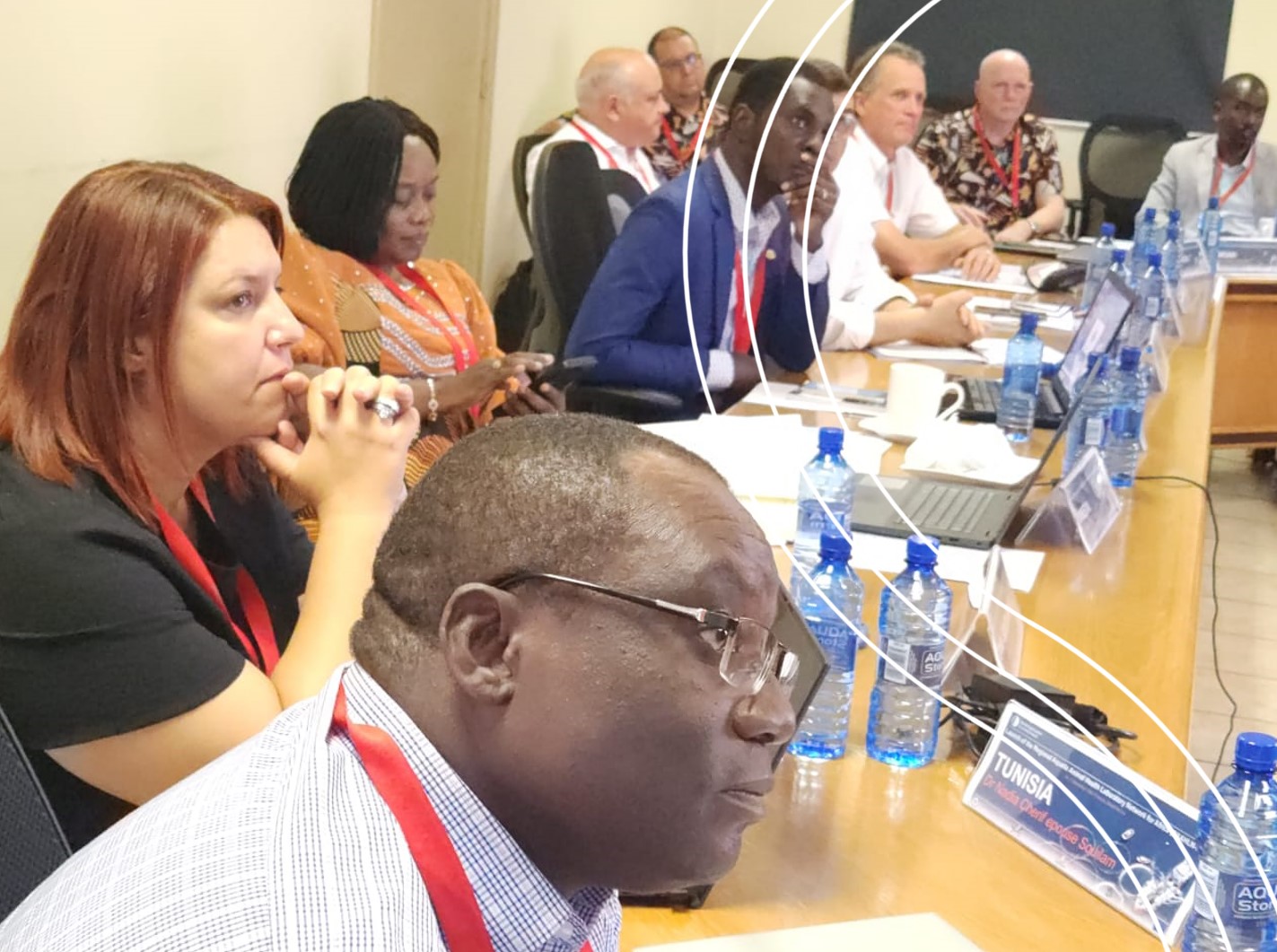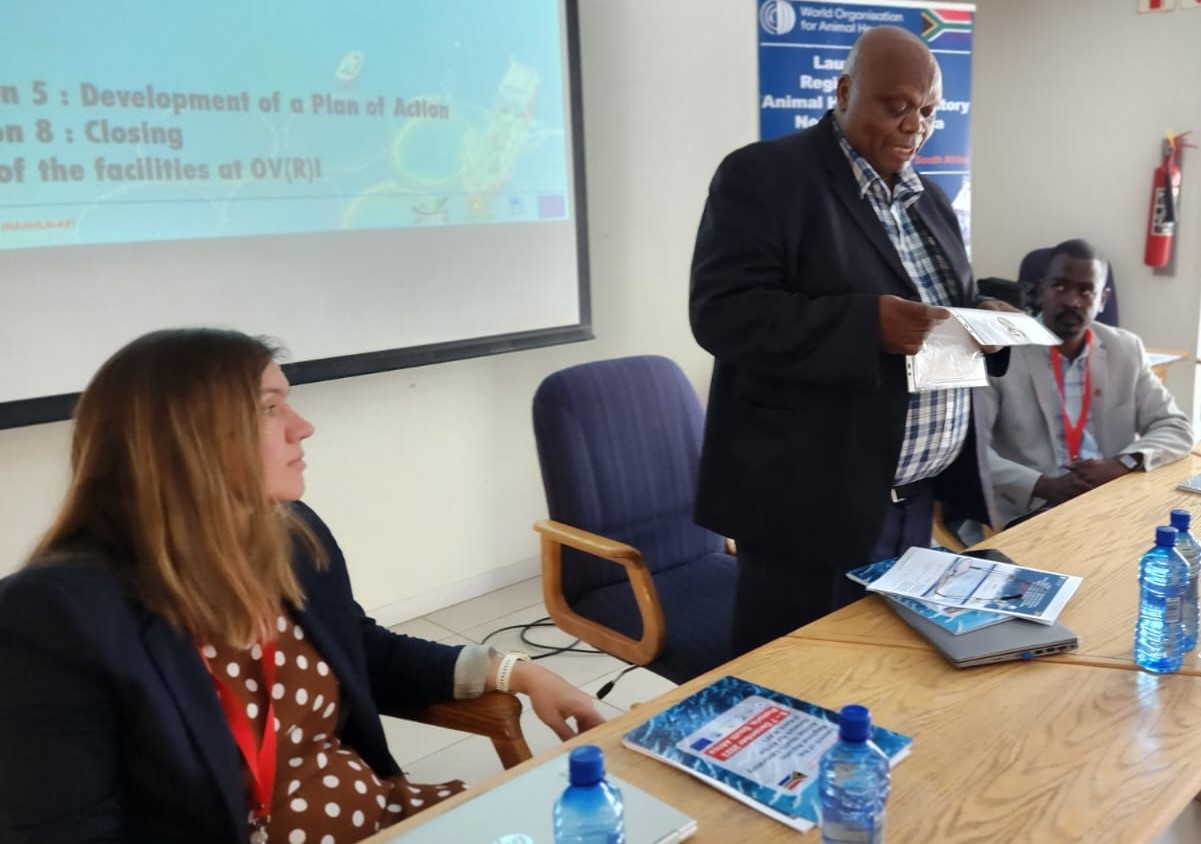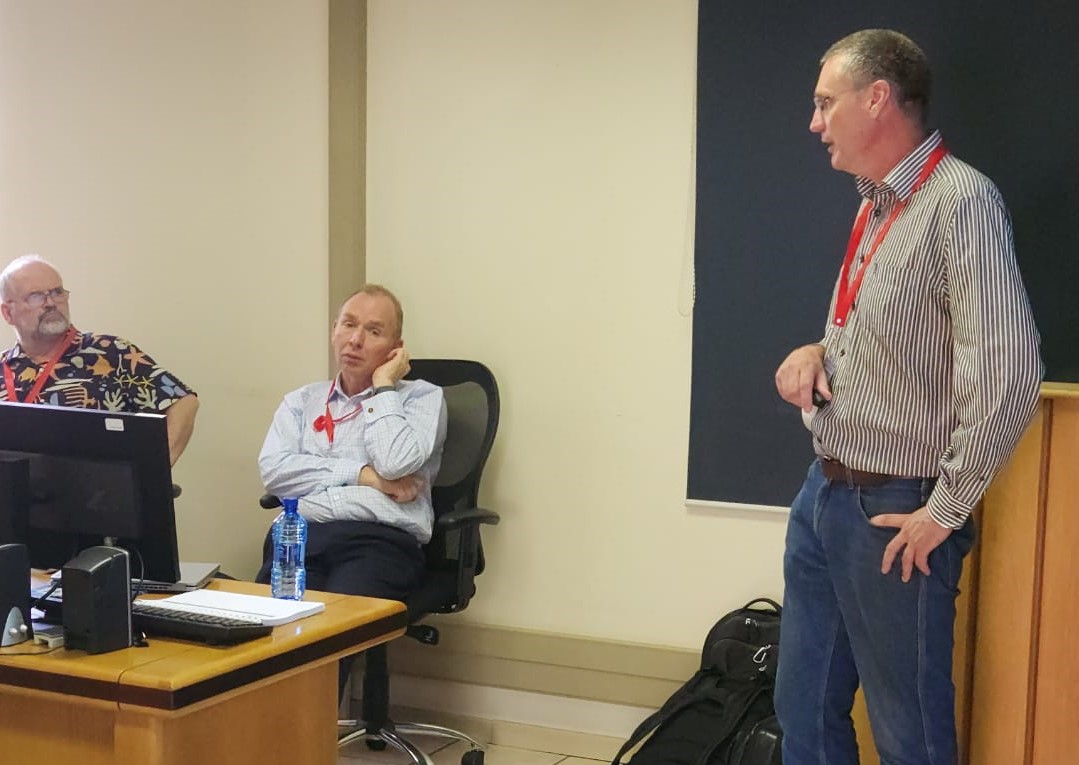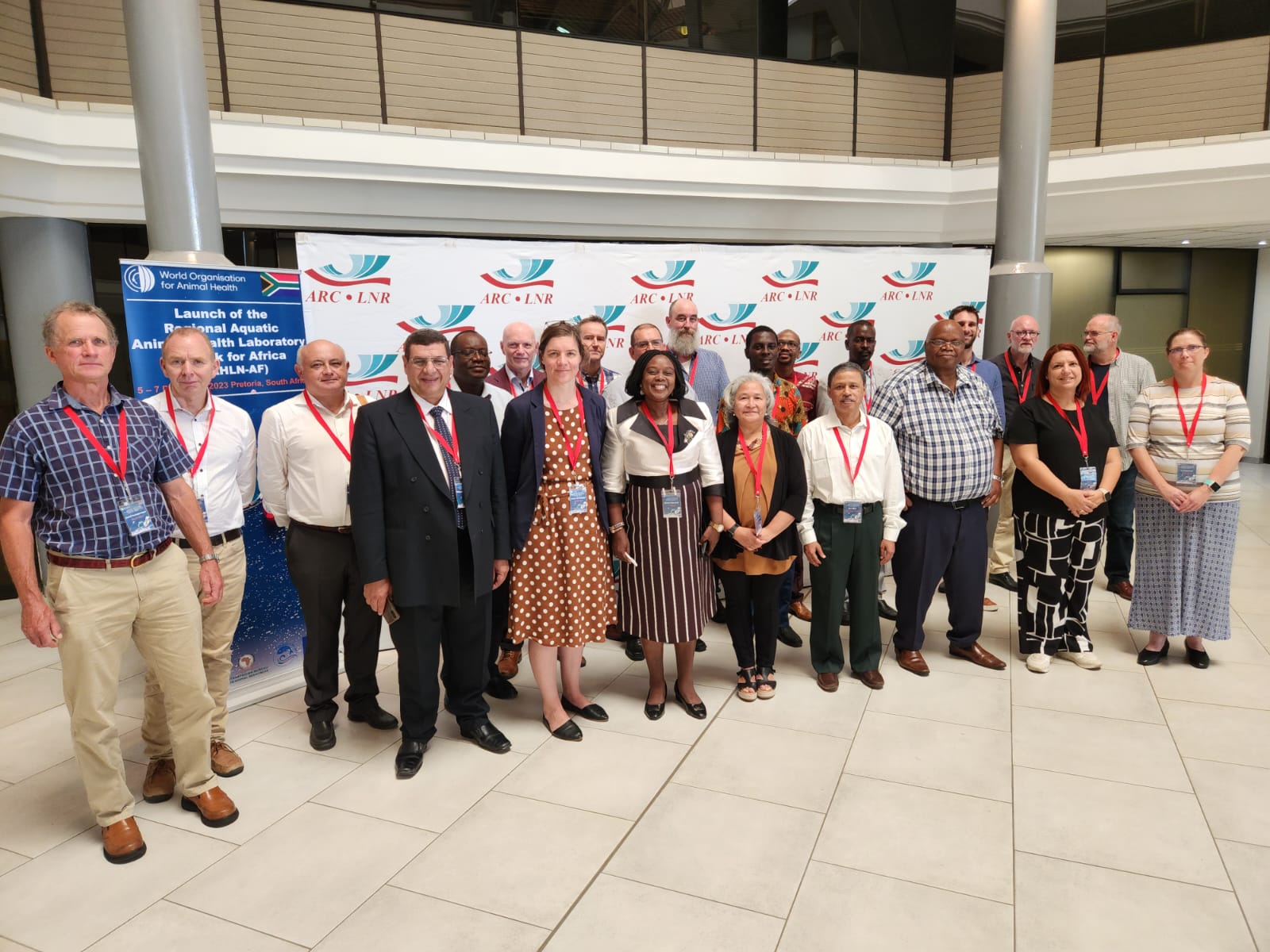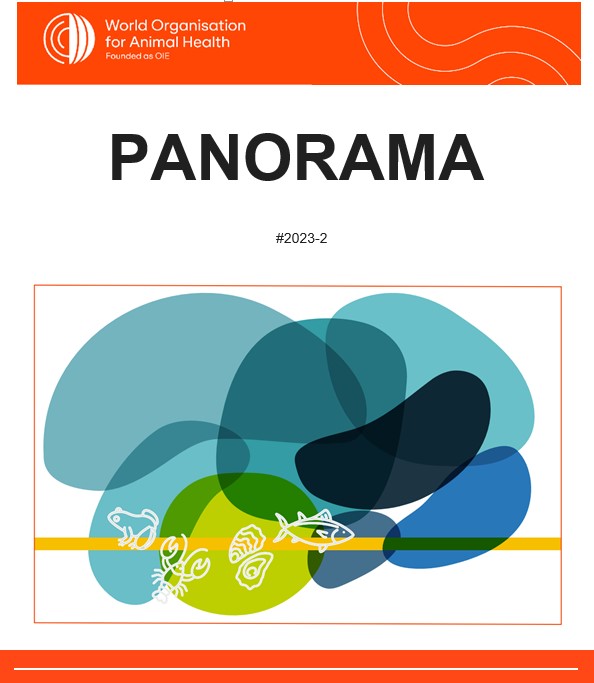
Fltr : Ms. Andrea Abernatzeder, Director of Aquaculture Innovation and Technology Development, Department of Forestry, Fisheries and the Environment (DFFE), Dr Michael Botlhe Modisane, Chief Director of Animal Production and Health, Department of Agriculture, Land Reform and Rural Development (DALRRD) and Dr Mohamed Sirdar, Programme Officer, Sub-Regional Representation for Southern Africa (WOAH). Picture (c) Communication (ARC) 2023
Fltr : Ms. Andrea Abernatzeder, Director of Aquaculture Innovation and Technology Development, Department of Forestry, Fisheries and the Environment (DFFE), Dr Michael Botlhe Modisane, Chief Director of Animal Production and Health, Department of Agriculture, Land Reform and Rural Development (DALRRD) and Dr Mohamed Sirdar, Programme Officer, Sub-Regional Representation for Southern Africa (WOAH). Picture (c) Communication (ARC) 2023.
After the launch of the Regional Aquatic Animal Health Networks (RAAHN) for North Africa (NA), in April 2023 (Tunis, Tunisia) and for Southern Africa (SA), in July 2023 (Lusaka, Zambia), this event represented the launch of the continental laboratory network for the Africa region (RAAHLN-AF). Indeed, the main technical constraint which is recurrently raised is the diagnostic capacity of national laboratories and laboratories with a regional outreach agenda. This justified the support to the establishment of this third network, specifically directed at uniting diagnosticians from Reference Laboratories (and Collaborating Centres) with a limited number of interested countries and diagnostic facilities in Africa, with a view – again – of scaling up its range at a later stage.
Dr Livio Heath presenting OVRI's portfolio of diagnostic facilities for aquatic animal diseases. Picture (c) Communication (ARC) 2023
Specifically, the network (launch) intended to :
Dr Livio Heath presenting OVRI’s portfolio of diagnostic facilities for aquatic animal diseases. Picture (c) Communication (ARC) 2023
This third meeting, commissioned by the African Union’s Interafrican Bureau for Animal Resources (AU-IBAR) was hosted by the Agricultural Research Council of South Africa (ARC) and it’s Onderstepoort Veterinary research Institute (OVI) from 5 – 7 December, brought together four existing accredited WOAH Reference Laboratories, for diseases, relevant for the Africa region and located in :
along with 6 National Reference Laboratories with demonstrated experience in the diagnosis of one or more aquatic animal disease and the interest to play a regional role as regional service laboratories :
In addition to the three existing accredited WOAH Reference Laboratories, the participation of the WOAH Collaborating Centres for Epidemiology and Risk Assessment of Aquatic Animal Diseases (Americas) at the Atlantic Veterinary College (AVC), University of Prince Edward Island (Canada) [Larry Hammel] as well as the above mentioned CEFAS and NVI bodies, which also serve as Collaborating Centres for Emerging Aquatic Animal Diseases [Ed Peeler] and for Epidemiology and Risk Assessment of Aquatic Animal Diseases (Europe) [Haakon Hansen] respectively.
Also in attendance were two FAO colleagues, Mrs Melba Reantaso and Mr Andrea Dall’Occo (Fisheries and Aquaculture Division, NFI) and two FAO/WOAH experts, with extensive experience in working for and within the private sector (Drs David Huchzermeyer and Marc Le Groumellec).
Dr Kevin Christison, WOAH Focal Point and Specialist Scientist, Aquaculture Innovation and Technology Development at the South African Department of Forestry, Fisheries and the Environment (DFFE) attended as a Member of the Aquatic Animal Health Standards Commission.
AU-IBAR was represented by the Coordinator of the FishGov-2 Project, Ms. Nelly Isyagi.
The meeting went through the agreed structure, the same that had also been followed by the two previous meetings (see agenda below) :
Under point 1 (taking stock of other networks) a few other (international, regional and national) laboratory networks were presented, dealing with mostly terrestrial diseases and/or diseases of public health interest :
A the end of the 3-day meeting, provisonal agreement was reached on the terms of reference, the institutional and legal arrangements, and the short to medium term action plan(s). The below statements are provisional and will have to be fine-tuned and validated in the weeks following this meeting :
Given the nature of Africa’s fishery and aquaculture sector, addressing this challenge entails adopting a regional approach to strengthen AAH laboratory capacity coherently across the continent in line with transboundary aquatic ecosystem and regional market needs. A collaborative approach anchored on building institutional linkages, partnerships and effective networking to promote sharing of resources, expertise, knowledge and information to fast-track capacity building and cost-effectiveness.
Vision
Contribute towards strengthening the sustainability, resilience and access to markets for Africa’s fisheries and aquaculture sector by improving access to quality aquatic animal health laboratory services and information.
